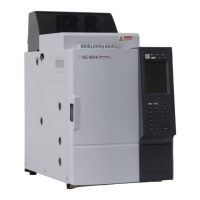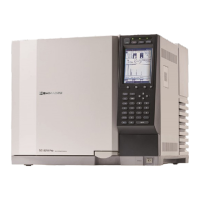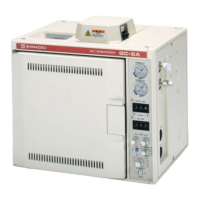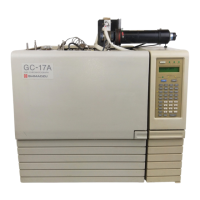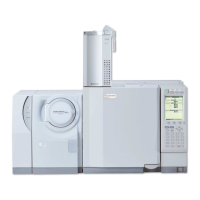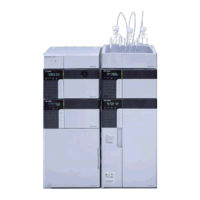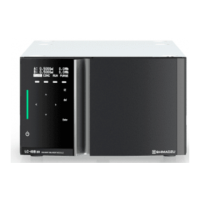13 Detector
13.1 Hydrogen Flame Ionization Detector (FID)
155
GC-2014
SIGNAL POLARITY
(Displayed only when Dual is selected for the control mode of the dual FID)
Selection: +/-, Default: +
Set to + to output after subtracting the right side cell signal from the left side cell signal
of the dual FID and set to - for the opposite.
FILTER TIME CONSTANT
Selection: 4 ms/5 ms/10 ms/20 ms/50 ms/100 ms/200 ms/500 ms/1 s/2 s,
Default: 200 ms (single FID), 1 s (dual FID)
This constant affects the processing of the detector signal.
As the time constant increases, noise as well as the peak height are reduced.
Select the optimum value in accordance with the peak half width. (Refer to “13.3 Filter
Signal Time Constant”.)
CONTROL MODE
Selection: Dual/single L/single R, Default: Dual
Set to Dual when connecting two columns to the dual FID and Single L or R when
connecting one column.
SIGNAL OUTPUT PORT
Selection: Off/Ch1/Ch2/Ch3/Ch4, Default: (Channel is automatically assigned.)
Select the digital and analog signals output channels. Four channels are available.
However, for analog output, only Ch1 and Ch2 are available as standard.
BACKGROUND SIG. SAVE
Selection: Off/Buff 1/Buff 2, Default: Off
Background baseline signals can be saved for the purpose of background subtraction.
BACKGROUND SIG COMP.
Selection: Off/Buff 1/Buff 2, Default: Off
Subtracts the saved background signal baseline from the actual baseline. This produces
a stable baseline despite considerable baseline fluctuations
DET SIG SUBTRACTION
Selection: Off/DET# 1/DET# 2/DET# 3/DET# 4, Default: Off
Subtracts the detector signal of one detector from the signal of another detector. This
function is mainly used in a dual column flow line to subtract the data acquired without
an injection from the data acquired with an injection. The background signal is elimi-
nated.
For the details on background save and background compensation, refer to “13.4
Background Compensation”.
SIGNAL RANGE
Selection: ×1/×10
-1
/×10
-2
/×10
-3
/×10
-4
, Default: /×10
-1
Multiplies the analog signal by the coefficient “10
-x
” for a linear analog signal type.
If the data processing unit is saturated, for example, change the setting from “×1” to
“×10
-1
”, from “×10
-2
” to “×10
-3
”. In case of the digital signal, the signal is always output
with “×1”.
SIGNAL ATTENUATION
Selection: ×1/×2
-1
/×2
-2
/×2
-3
/×2
-4
, Default: /×2
-1
Multiplies the analog signal by the coefficient “2
-x
” for a wide analog signal type.
If the data processing unit is saturated, for example, change the setting from “×1” to “×2
-1
”,
from “×2
-2
” to “×2
-3
”. In case of the digital signal, the signal is always output with “×1”.
ANALOG SIGNAL TYPE
Selection: Linear/Wide, Default: Linear
Set this item when the GC is connected to a Chromatopac in analog format.
Wide ... Select wide when connecting the GC to the C-R8A/C-R7A/C-R7A plus.
The GC outputs square root of the original signal to the Chromatopac, and the
received signals are squared in the Chromatopac.
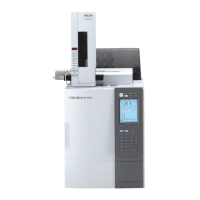
